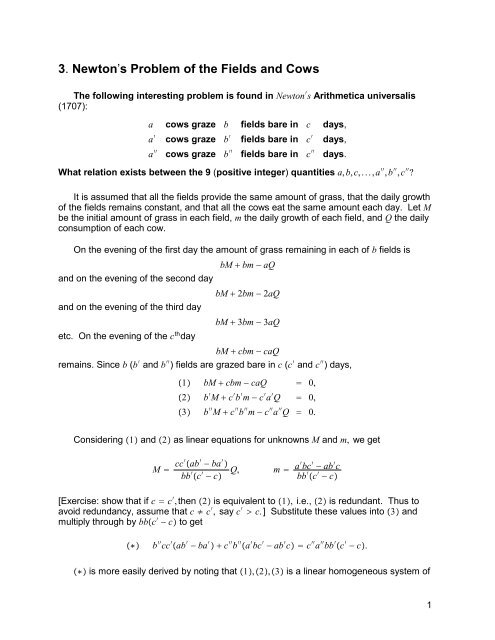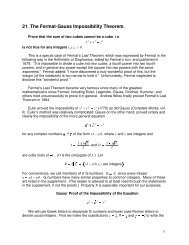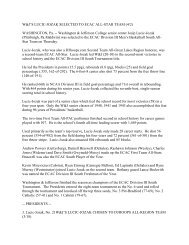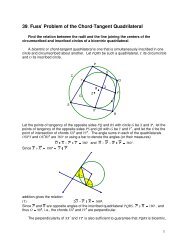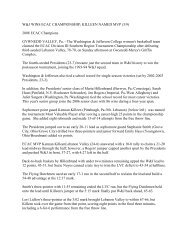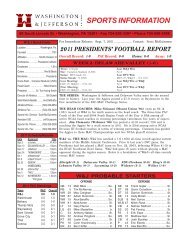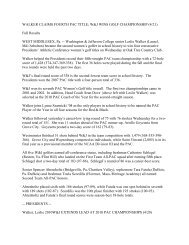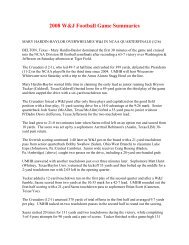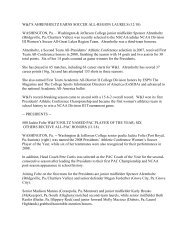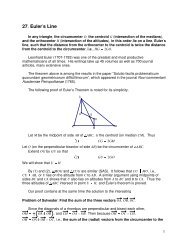3. Newton's Problem of the Fields and Cows
3. Newton's Problem of the Fields and Cows
3. Newton's Problem of the Fields and Cows
You also want an ePaper? Increase the reach of your titles
YUMPU automatically turns print PDFs into web optimized ePapers that Google loves.
<strong>3.</strong> Newton’s <strong>Problem</strong> <strong>of</strong> <strong>the</strong> <strong>Fields</strong> <strong>and</strong> <strong>Cows</strong><br />
The following interesting problem is found in ewton s Arithmetica universalis<br />
(1707):<br />
a cows graze b fields bare in c days,<br />
a cows graze b fields bare in c days,<br />
a cows graze b fields bare in c days.<br />
What relation exists between <strong>the</strong> 9 (positive integer) quantities a, b, c, . . . , a , b , c <br />
It is assumed that all <strong>the</strong> fields provide <strong>the</strong> same amount <strong>of</strong> grass, that <strong>the</strong> daily growth<br />
<strong>of</strong> <strong>the</strong> fields remains constant, <strong>and</strong> that all <strong>the</strong> cows eat <strong>the</strong> same amount each day. Let M<br />
be <strong>the</strong> initial amount <strong>of</strong> grass in each field, m <strong>the</strong> daily growth <strong>of</strong> each field, <strong>and</strong> Q <strong>the</strong> daily<br />
consumption <strong>of</strong> each cow.<br />
On <strong>the</strong> evening <strong>of</strong> <strong>the</strong> first day <strong>the</strong> amount <strong>of</strong> grass remaining in each <strong>of</strong> b fields is<br />
<strong>and</strong> on <strong>the</strong> evening <strong>of</strong> <strong>the</strong> second day<br />
<strong>and</strong> on <strong>the</strong> evening <strong>of</strong> <strong>the</strong> third day<br />
etc. On <strong>the</strong> evening <strong>of</strong> <strong>the</strong> c th day<br />
bM bm aQ<br />
bM 2bm 2aQ<br />
bM 3bm 3aQ<br />
bM cbm caQ<br />
remains. Since b (b <strong>and</strong> b ) fields are grazed bare in c (c <strong>and</strong> c ) days,<br />
1 bM cbm caQ 0,<br />
2 b M c b m c a Q 0,<br />
3 b M c b m c a Q 0.<br />
Considering 1 <strong>and</strong> 2 as linear equations for unknowns M <strong>and</strong> m, we get<br />
M cc ab ba <br />
bb c c<br />
Q, m a bc ab c<br />
bb c c<br />
[Exercise: show that if c c , <strong>the</strong>n 2 is equivalent to 1, i.e., 2 is redundant. Thus to<br />
avoid redundancy, assume that c c , say c c. ] Substitute <strong>the</strong>se values into 3 <strong>and</strong><br />
multiply through by bbc c to get<br />
<br />
b cc ab ba c b a bc ab c c a bb c c.<br />
is more easily derived by noting that 1, 2, 3 is a linear homogeneous system <strong>of</strong><br />
1
equations in three unknowns, M, m <strong>and</strong> Q with a non-trivial solution, <strong>and</strong> thus <strong>the</strong><br />
determinant<br />
or<br />
b cb ca<br />
b c b c a 0,<br />
b c b c a <br />
b cb ca<br />
b c b c a 0,<br />
b c b c a <br />
<strong>and</strong> this yields .<br />
by itself is a necessary, but not sufficient condition. For example<br />
a b c 2 3 2<br />
a b c <br />
a b c <br />
a b c<br />
a b c <br />
a b c <br />
3 5 2<br />
5 8 2<br />
4 2 3<br />
3 3 4<br />
2 5 5<br />
satisfies , but leads to Q 0, i.e., cows eat nothing.<br />
also satisfies , but leads to<br />
m 2Q 0, i.e., m <strong>and</strong> Q are both zero, or one is negative <strong>and</strong> <strong>the</strong> o<strong>the</strong>r is positive.<br />
a b c<br />
a b c <br />
a b c <br />
78 10 5<br />
117 20 8<br />
23 5 13<br />
satisfies , since<br />
b cb ca<br />
b c b c a <br />
b c b c a <br />
10 50 390<br />
20 160 936<br />
5 65 299<br />
is row equivalent to<br />
10 50 390<br />
0 600 1560<br />
0 0 0<br />
from which we can conclude that M 26Q <strong>and</strong> m 2. 6Q with Q being any (positive)<br />
number.<br />
The conditions on a, b, c, . . . , a , b <strong>and</strong> c for <strong>the</strong>re to be positive solutions M, m <strong>and</strong> Q are<br />
1. a, b, c, . . . , a , b <strong>and</strong> c are positive integers with<br />
2. c c ,<br />
<strong>3.</strong> ab a b 0,<br />
4. a bc ab c 0, <strong>and</strong><br />
5. .<br />
2


